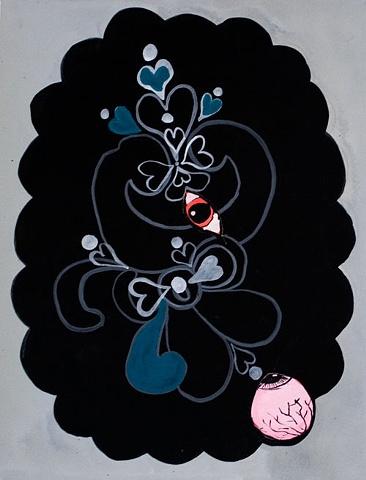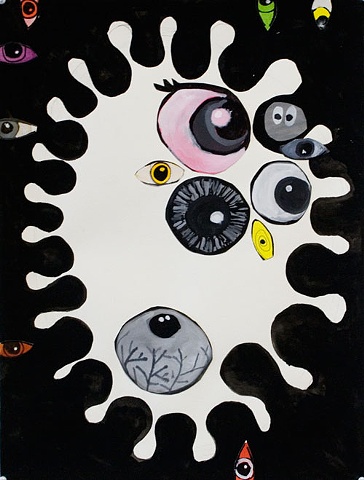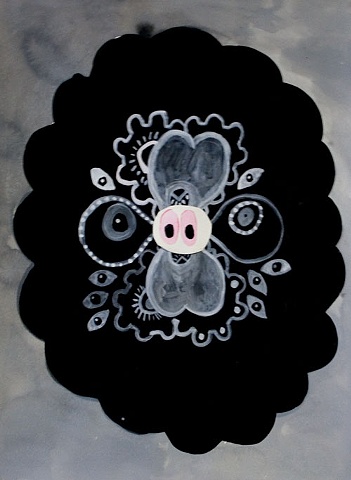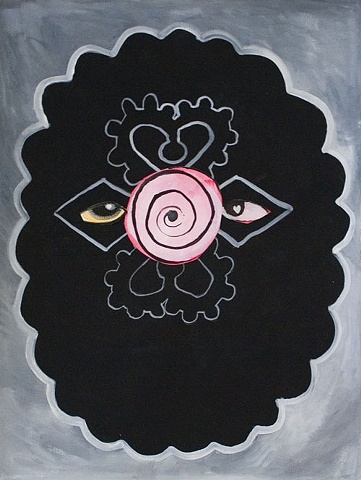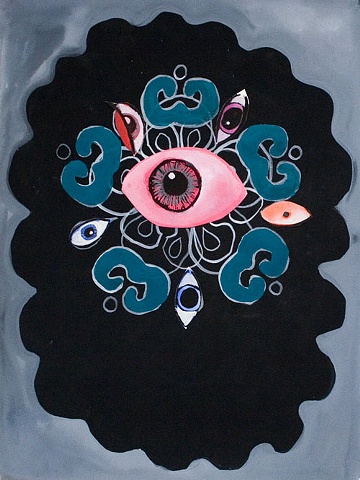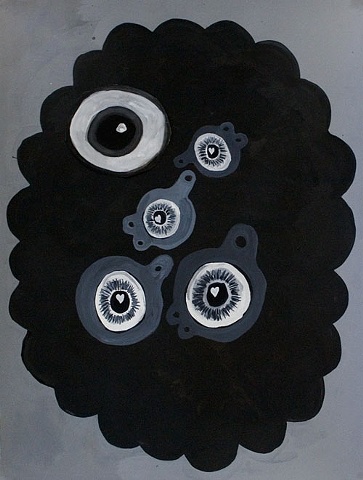Vastness of Black
“Black Bloom”
The series of drawings, “Black Bloom”, stand at the intersection of ornament and introspection, invoking both the dazzling density of Lari Pittman’s visual language and the sacred geometry of Buddhist black mandalas. Set against a deep, inky void, the central symmetrical figures radiate with a quiet force, composed of layered eyes, petal-like forms, and gestural motifs that suggest both anatomical and celestial diagrams.
Rooted in the tradition of black mandalas—used in Buddhist meditative practice to absorb negative energy and cultivate transformation—this work acts as a spiritual technology: a contemplative object that beckons inward gaze. Its mirrored structure and symbolic repetition echo the meditative process of dissolution and regeneration, where the self is deconstructed and reassembled within cosmic order.
Like Pittman’s paintings, the “Black Bloom” drawings are baroque in their ornamentation and confrontational in their symbolism. The use of cartoon-like eyes invites both humor and surveillance, drawing attention to the act of looking and being looked at. There is a tension here—between play and power, sacred and strange—that mirrors the layered complexity of identity and perception.
The dark, scalloped enclosure functions as both container and portal, framing the central figure as a site of ritual. Surrounded by a luminous aura of pale greys and whites, the forms bloom outward, echoing organic growth while also recalling protective armor or insect symmetry.
In this way, “Black Bloom” is a meditation on visuality, protection, and psychic mapping. It channels Pittman’s maximalism and spiritual density, translating it into a quieter, more intimate language. The work holds space for duality—for the grotesque and the beautiful, the sacred and the cartoonish—to coexist in a field of reflection and becoming.
This statement was written with the aid of Artificial Intelligence.
